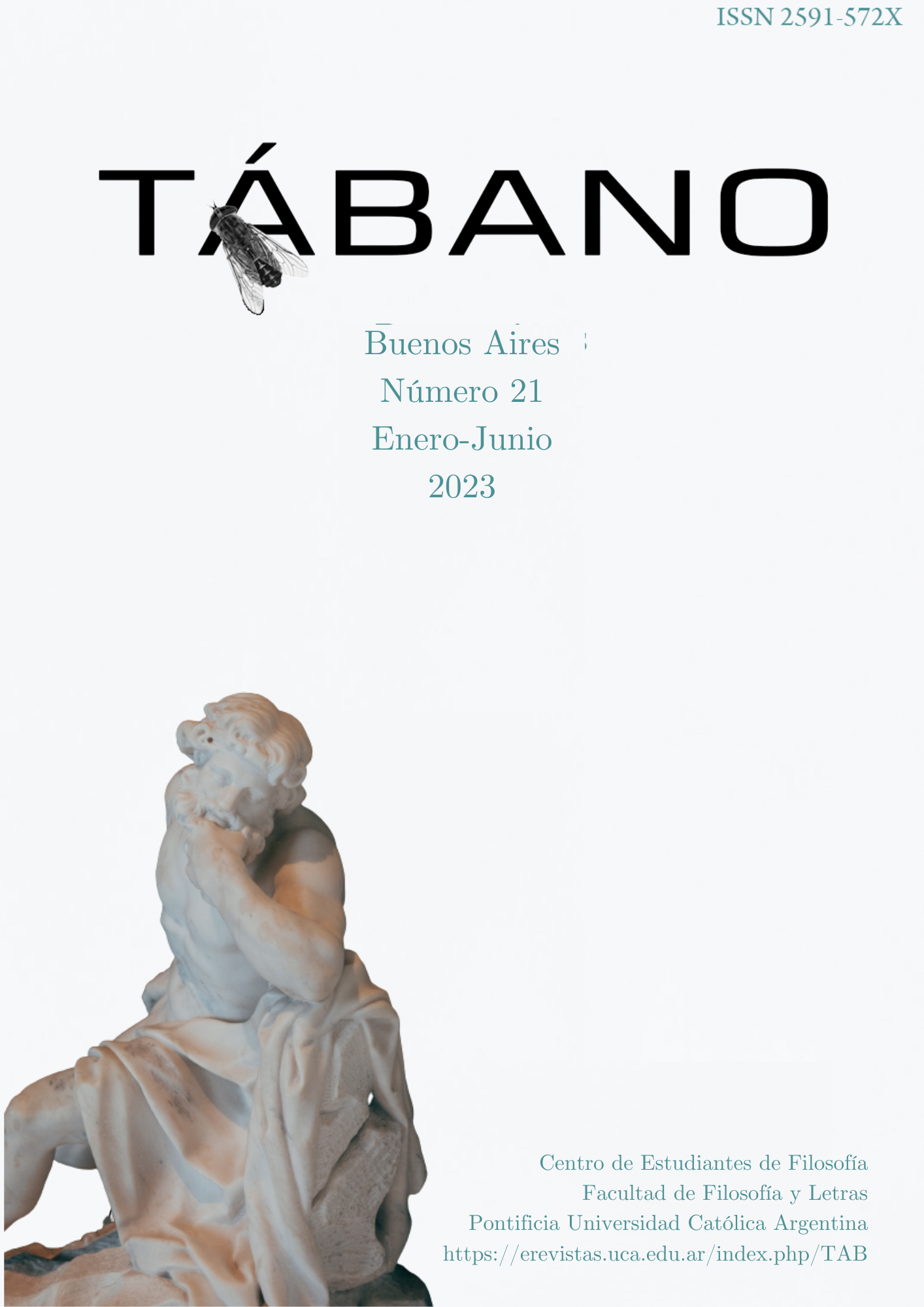Photogénie or What Does the Image of the Silent Cinema Expresses
DOI:
https://doi.org/10.46553/tab.21.2023.p64-80Keywords:
Photogénie, philosophy of cinema, Louis Delluc, Jean Epstein, cinematographic image.Abstract
The purpose of this analysis is to stablish the basis of the cinematic expression, that is, what means does the cinema use to express itself. The focus of this paper will be the cinematic image and its expression through photogénie. The concept of photogénie is of interest given that, as claimed by Louis Delluc, “photogénie is the law of cinema”. Furthermore, it will be taken into account the way in which Jean Epstein will resume the intellectual sketches of Delluc in vistas of highlighting what makes and image photogenic and why does the cinema use it in order to express itself.
Downloads
References
Artaud, A. (1994). El cine. Madrid: Alianza.
Bullot, E. (2012). Thoughts on photogénie plastique. En Keller, S. (ed.), Jean Epstein Critical Essays and New Translations. Ámsterdam: Amsterdam University Press.
Challine, E; Gauthier, C. (2019). La photogénie, pensée magique. En Marie Gispert et Catherine Méneux (dir.), Critique(s) d’art: nouveaux corpus, nouvelles méthodes (pp. 418-437). Paris: HiCSA.
Darhuys, G. (1927). Jaques de Baroncelli. En Cinéma, n.1, pp. 24-25.
Deleuze, G. (2013). Cine I: la imagen-movimiento. Barcelona: Paidós.
Deleuze, G. (2016). Cine II: La imagen-tiempo. Barcelona: Paidós.
Deleuze, G. (2009). Cine I. Buenos Aires: Cactus.
Delluc, L. (1919). Cinéma et Cie. París: Bernard Grasset Editeur.
Delluc, L. (1920). Photogénie. París: M. de Brunoff.
Epstein, J. (1974). Écrits sur le cinéma, vol. I. París: Éditions Seghers
Epstein, J. (2013). El cine del diablo. Buenos Aires: Cactus.
Epstein, J. (2015). La inteligencia de una máquina: una filosofía del cine. Buenos Aires: Cactus.
Hauser, A. (1978). Historia social del arte y literatura, vol. 3. Madrid: Guadarrama.
Liebman, S. (2012). Novelty and Poiesis in the Early Writings of Jean Epstein. En Keller, S. (ed.), Jean Epstein Critical Essays and New Translations. Ámsterdam: Amsterdam University Press.
Moholy-Nagy, L. (2018). Pintura, fotografía, cine. Buenos Aires: Buchland.
Simondon, G. (2007). El modo de existencia de los objetos técnicos. Buenos Aires: Prometeo.
Simondon, G. (2014). Curso de la percepción. Buenos Aires: Cactus.
Wall-Romana, C. (2013). Jean Epstein: corporeal cinema and filme philosophy. Manchester: Manchester University Press.
Downloads
Published
How to Cite
Issue
Section
License


